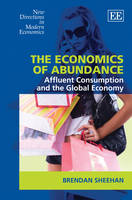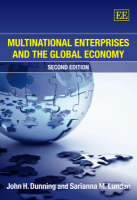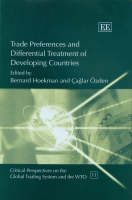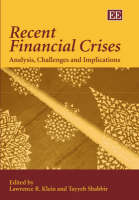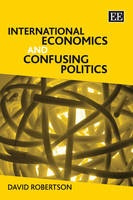Globalization and Economic and Financial Instability
 -15%
portes grátis
-15%
portes grátis
Globalization and Economic and Financial Instability
Dilyard, John R.; Gray, H. P.
Edward Elgar Publishing Ltd
11/2005
656
Dura
Inglês
9781843768098
15 a 20 dias
Acknowledgements
Introduction H. Peter Gray and John R. Dilyard
PART I OVERVIEW OF GLOBAL INSTABILITY
1. Barry Eichengreen and Richard Portes (1987), 'The Anatomy of Financial Crises'
2. Andrew Crockett (1997), 'Why Is Financial Stability a Goal of Public Policy?'
3. George G. Kaufman (2000), 'Banking and Currency Crises and Systemic Risk: Lessons from Recent Events'
4. Terutomo Ozawa (2001), 'Borrowed Growth: Current-account Deficit-based Development Finance'
5. H. Peter Gray (1999), 'Macro Financial Stability Policy: An Overview for a Globalized World'
6. Peter B. Kenen (2002), 'Currencies, Crises, and Crashes'
7. Paul A. Volcker (2002), 'Globalization and the World of Finance'
8. James Tobin (1978), 'A Proposal for Monetary Reform'
9. C.V. Helliar, A.A. Lonie, D.M. Power and C.D. Sinclair (2000), 'The Risks of Investing in Emerging Markets: Fund Managers' Perspectives'
PART II INSTABILITY IN DEVELOPING NATIONS
10. John R. Dilyard and H. Peter Gray (2002), 'Increasing the Contribution of Foreign Investment to Sustainable Development: Domestic and International Policy Measures'
11. S. Stanley Katz (1999), 'The Asian Crisis, The IMF and the Critics'
12. Kwang W. Jun and Thomas L. Brewer (1997), 'The Role of Foreign Private Capital Flows in Sustainable Development'
13. Ajit Singh (2003), 'Capital Account Liberalization, Free Long-term Capital Flows, Financial Crises, and Economic Development'
14. Christian E. Weller (2001), 'Financial Crises After Financial Liberalisation: Exceptional Circumstances or Structural Weakness?'
PART III REGIONAL EXPERIENCE OF INSTABILITY
15. James K. Galbraith (2002), 'The Brazilian Swindle and The Larger International Monetary Problem'
16. David Felix (1997-98), 'On Drawing General Policy Lessons from Recent Latin American Currency Crises'
17. Jan A. Kregel (1998), 'East Asia Is Not Mexico: The Difference Between Balance of Payments Crises and Debt Deflation'
18. Paul C.H. Chiu (2000), 'Taiwan's Experience in Dealing with the Asian Financial Crisis and Examination of the Role of Short-term Capital Flows in the Emerging Market Economy'
19. Rudi Dornbusch (2001), 'Malaysia: Was It Different?'
20. Carlos Diaz-Alejandro (1985), 'Good-bye Financial Repression, Hello Financial Crash'
PART IV INSTABILITY AND THE DEVELOPED WORLD
21. Dominick Salvatore (2002), 'The Euro: Expectations and Performance'
22. Wynne Godley and Alex Izurieta (2002), 'Strategic Prospects and Policies for the U.S. Economy'
23. Robert A. Blecker (1999), 'The Ticking Debt Bomb: Why the U.S. International Financial Position Is Not Sustainable'
24. Catherine L. Mann (2000), 'Is the U.S. Current Account Deficit Sustainable?'
25. Claudia M. Buch, Ralph P. Heinrich, Lusine Lusinyan and Mechthild Schrooten (2000), 'Russia's Debt Crisis and the Unofficial Economy'
PART V GLOBAL FINANCIAL INSTABILITY
26. Joseph E. Stiglitz (1999), 'Reforming the Global Economic Architecture: Lessons from Recent Crises'
27. Stanley Fischer (2003), 'Financial Crises and Reform of the International Financial System'
28. Claudia M. Buch (1999), 'Chilean-Type Capital Controls - A Building Block of the New International Financial Architecture?'
29. John Williamson (2000), 'What Should the World Bank Think about the Washington Consensus?'
30. T.N. Srinivasan (2000), 'The Washington Consensus a Decade Later: Ideology and the Art and Science of Policy Advice'
Name Index
Acknowledgements
Introduction H. Peter Gray and John R. Dilyard
PART I OVERVIEW OF GLOBAL INSTABILITY
1. Barry Eichengreen and Richard Portes (1987), 'The Anatomy of Financial Crises'
2. Andrew Crockett (1997), 'Why Is Financial Stability a Goal of Public Policy?'
3. George G. Kaufman (2000), 'Banking and Currency Crises and Systemic Risk: Lessons from Recent Events'
4. Terutomo Ozawa (2001), 'Borrowed Growth: Current-account Deficit-based Development Finance'
5. H. Peter Gray (1999), 'Macro Financial Stability Policy: An Overview for a Globalized World'
6. Peter B. Kenen (2002), 'Currencies, Crises, and Crashes'
7. Paul A. Volcker (2002), 'Globalization and the World of Finance'
8. James Tobin (1978), 'A Proposal for Monetary Reform'
9. C.V. Helliar, A.A. Lonie, D.M. Power and C.D. Sinclair (2000), 'The Risks of Investing in Emerging Markets: Fund Managers' Perspectives'
PART II INSTABILITY IN DEVELOPING NATIONS
10. John R. Dilyard and H. Peter Gray (2002), 'Increasing the Contribution of Foreign Investment to Sustainable Development: Domestic and International Policy Measures'
11. S. Stanley Katz (1999), 'The Asian Crisis, The IMF and the Critics'
12. Kwang W. Jun and Thomas L. Brewer (1997), 'The Role of Foreign Private Capital Flows in Sustainable Development'
13. Ajit Singh (2003), 'Capital Account Liberalization, Free Long-term Capital Flows, Financial Crises, and Economic Development'
14. Christian E. Weller (2001), 'Financial Crises After Financial Liberalisation: Exceptional Circumstances or Structural Weakness?'
PART III REGIONAL EXPERIENCE OF INSTABILITY
15. James K. Galbraith (2002), 'The Brazilian Swindle and The Larger International Monetary Problem'
16. David Felix (1997-98), 'On Drawing General Policy Lessons from Recent Latin American Currency Crises'
17. Jan A. Kregel (1998), 'East Asia Is Not Mexico: The Difference Between Balance of Payments Crises and Debt Deflation'
18. Paul C.H. Chiu (2000), 'Taiwan's Experience in Dealing with the Asian Financial Crisis and Examination of the Role of Short-term Capital Flows in the Emerging Market Economy'
19. Rudi Dornbusch (2001), 'Malaysia: Was It Different?'
20. Carlos Diaz-Alejandro (1985), 'Good-bye Financial Repression, Hello Financial Crash'
PART IV INSTABILITY AND THE DEVELOPED WORLD
21. Dominick Salvatore (2002), 'The Euro: Expectations and Performance'
22. Wynne Godley and Alex Izurieta (2002), 'Strategic Prospects and Policies for the U.S. Economy'
23. Robert A. Blecker (1999), 'The Ticking Debt Bomb: Why the U.S. International Financial Position Is Not Sustainable'
24. Catherine L. Mann (2000), 'Is the U.S. Current Account Deficit Sustainable?'
25. Claudia M. Buch, Ralph P. Heinrich, Lusine Lusinyan and Mechthild Schrooten (2000), 'Russia's Debt Crisis and the Unofficial Economy'
PART V GLOBAL FINANCIAL INSTABILITY
26. Joseph E. Stiglitz (1999), 'Reforming the Global Economic Architecture: Lessons from Recent Crises'
27. Stanley Fischer (2003), 'Financial Crises and Reform of the International Financial System'
28. Claudia M. Buch (1999), 'Chilean-Type Capital Controls - A Building Block of the New International Financial Architecture?'
29. John Williamson (2000), 'What Should the World Bank Think about the Washington Consensus?'
30. T.N. Srinivasan (2000), 'The Washington Consensus a Decade Later: Ideology and the Art and Science of Policy Advice'
Name Index


